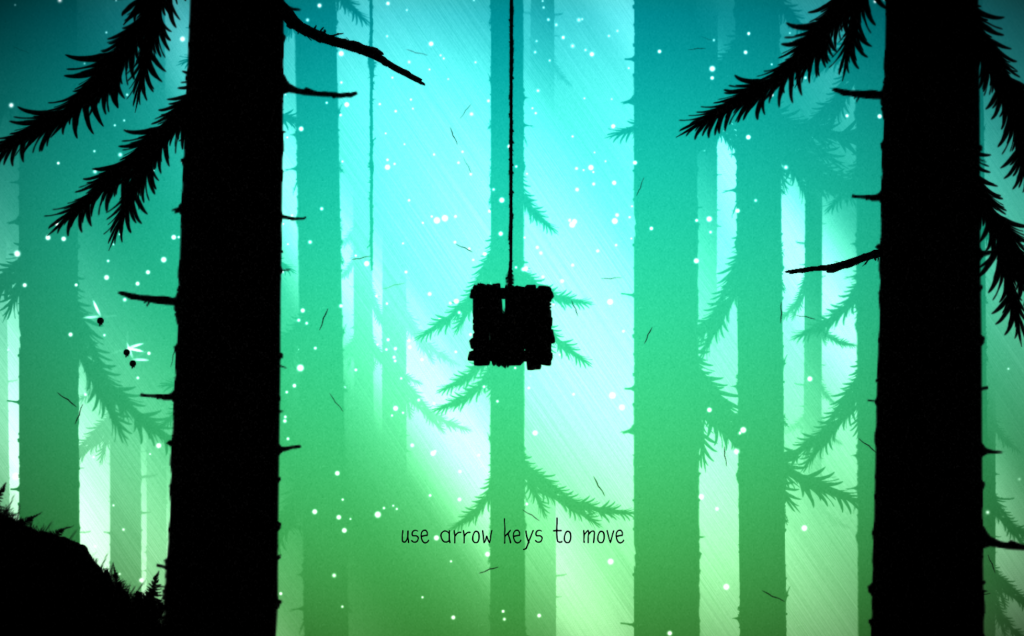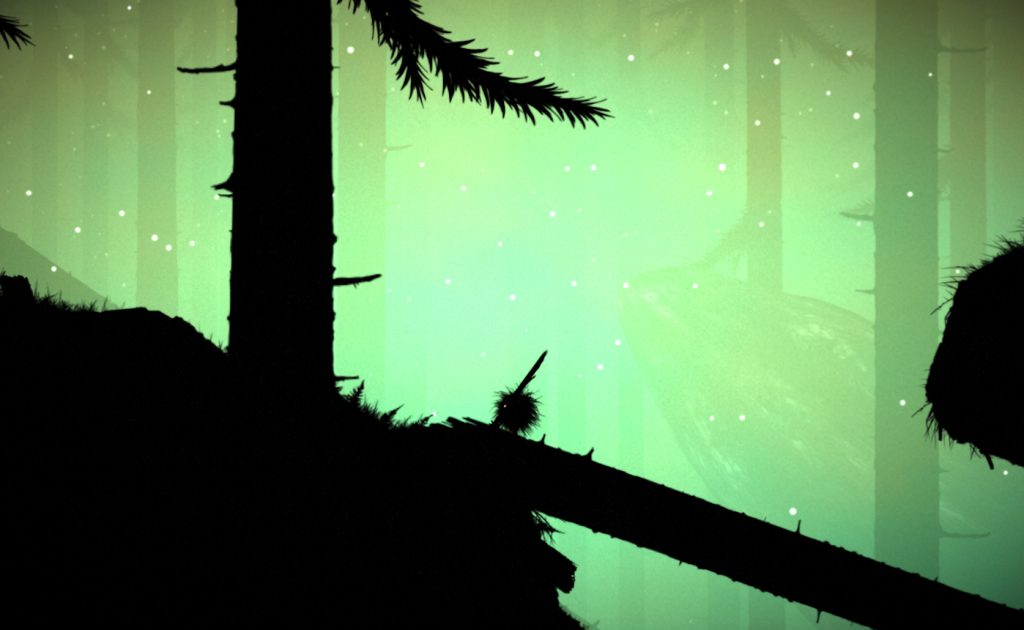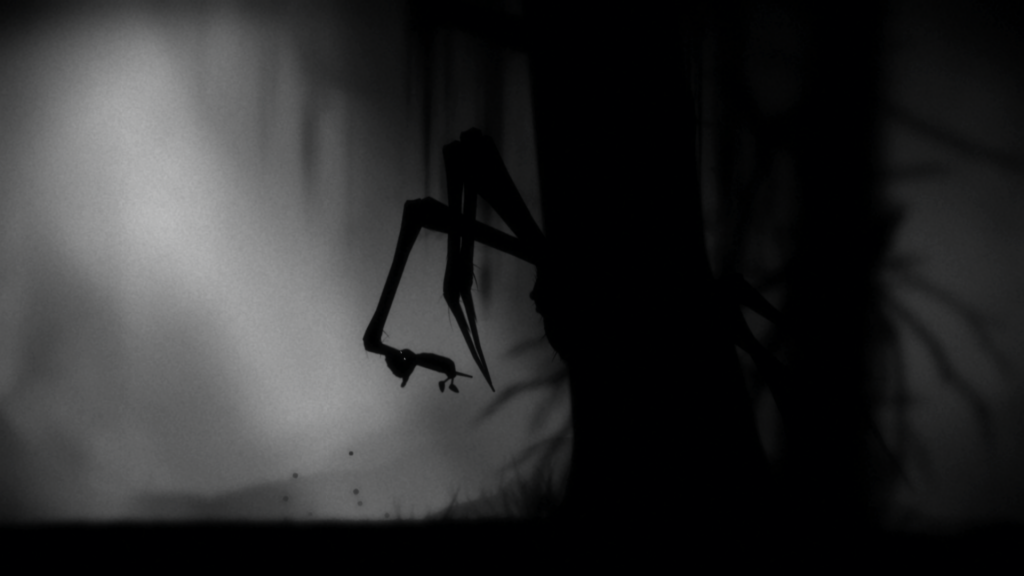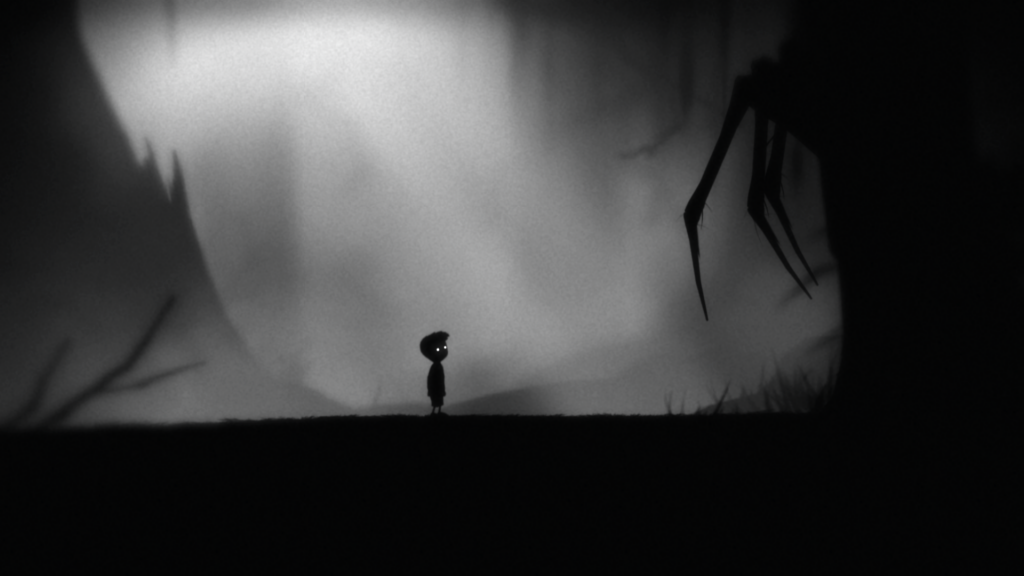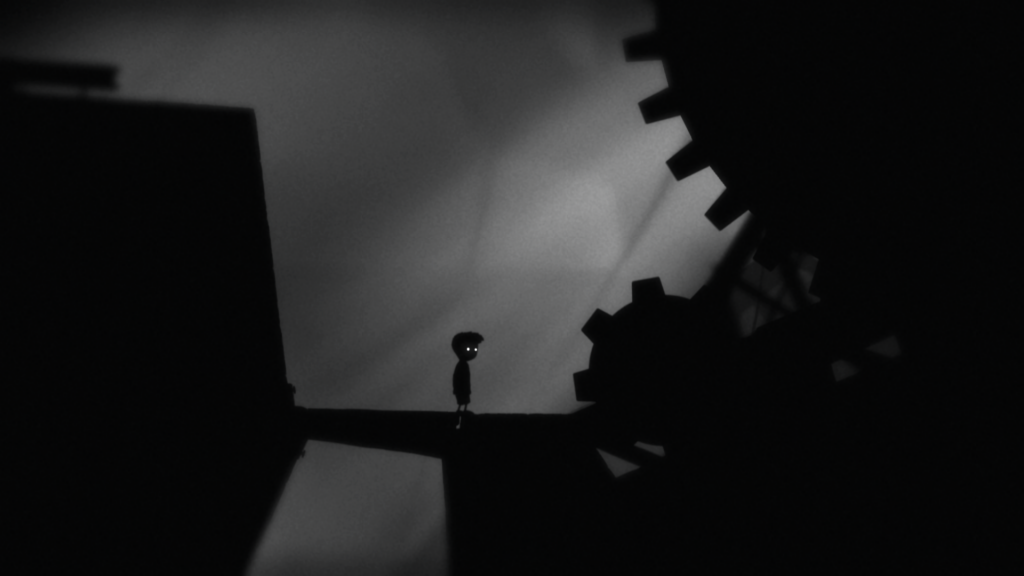
Feist – I’m a small, small thing in an evil, evil world.
The first game recommended by some guys from Switzerland was Feist. I was also pointed to the Steam Curator-List “Swiss Games”. Feist is a indie game developed by the Zurich studio Bits & Beasts. Looking at the website, this game won about 1000 awards. So I was also very excited to download the game. I was even more excited to see an offer at HumbleBundle for 7$.
At first glance the graphics and atmosphere of the game look very similar to Limbo. But I’ve loved Limbo, so – good for me. You start the game as .. a box. I didn’t see this coming, but ok. So I would make my way through the game as a box. After introducing the controls, and making the box swing, you get the idea that something might be inside the box. When I finally managed to destroy the box, I was super-excited to see this amazing small, fluffy creature, which somehow reminded me of this Austrian book for children “Swabidu”.
What immediately catches the attention is the intense and atmospheric background music. Also the graphics are very artistic and would give the game a very special ambience.
The first level is very smooth and gives a nice introduction to get used to the controls. And then.. the game already starts with its first tricky puzzles. And pretty soon it gets depressing. Your enemies are very uncomfortable and fast, and the puzzles definitely not easy. From this point you wouldn’t relate Feist to Limbo anymore. So suddenly the game principle is clear: fail to succeed. You have to learn from your failures. And you will fail a lot. This is actually a mechanic not a lot of AAA games would dare to use anymore. Early games, such as Zelda – Ocarina of Time were constantly challenging players with tricky puzzles and forcing players to actually restart levels several times (or look for level guides in the web – which was very slow back then). New games often give players hints really soon (if the player fails too often) in order not to frustrate them and lose their attention. Replaying Zelda on the Nintendo DS, for instance, was a shocking experience. They’ve included this “stone of wisdom”, which would give players hints to the solution – in form of video clips showing how to solve the puzzles.
So in Feist, you are living through this tiny, fluffy, hairy creature, which gets pushed around by all the other creatures in the forest and is either trapped or on the run. Your weapons are ridiculous powerless sticks and cones – your enemies giant thorny mosquitos, caterpillars, and moles (?). Often you would just run. Sometimes you would hide or look for ways out. And this game design works. I’ve definitely enjoyed playing Feist and would recommend it to everyone with a free evening, but don’t expect it to be stressless.![]()
| Release | 2015 |
| Genre | platformer, puzzle |
| Developer | Bits & Beasts |
| Publisher | Finji |
| https://playfeist.net | |

